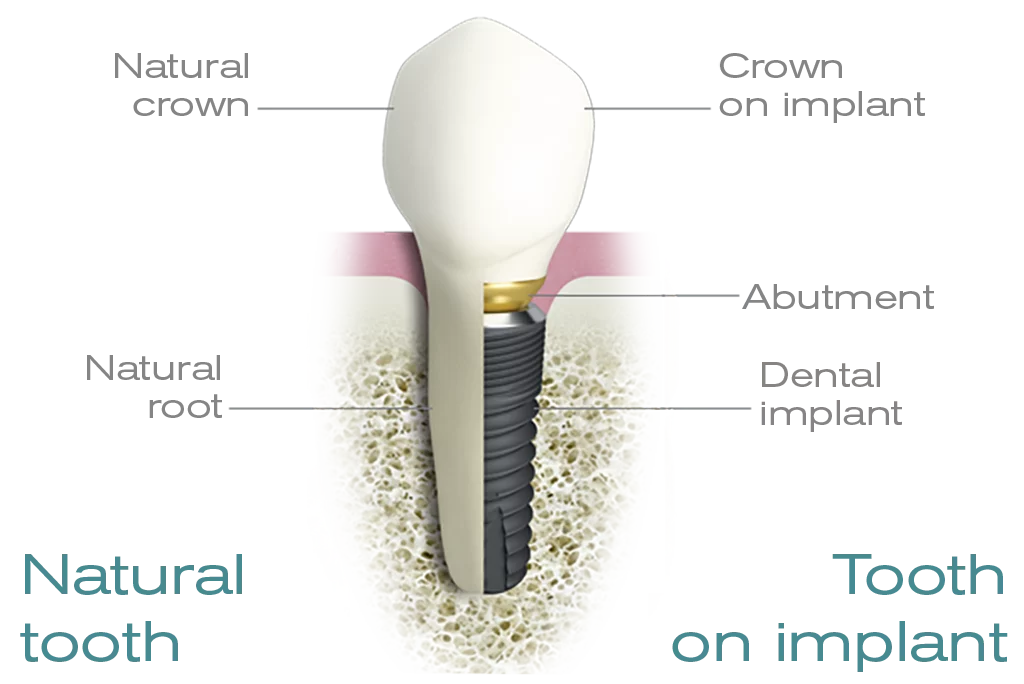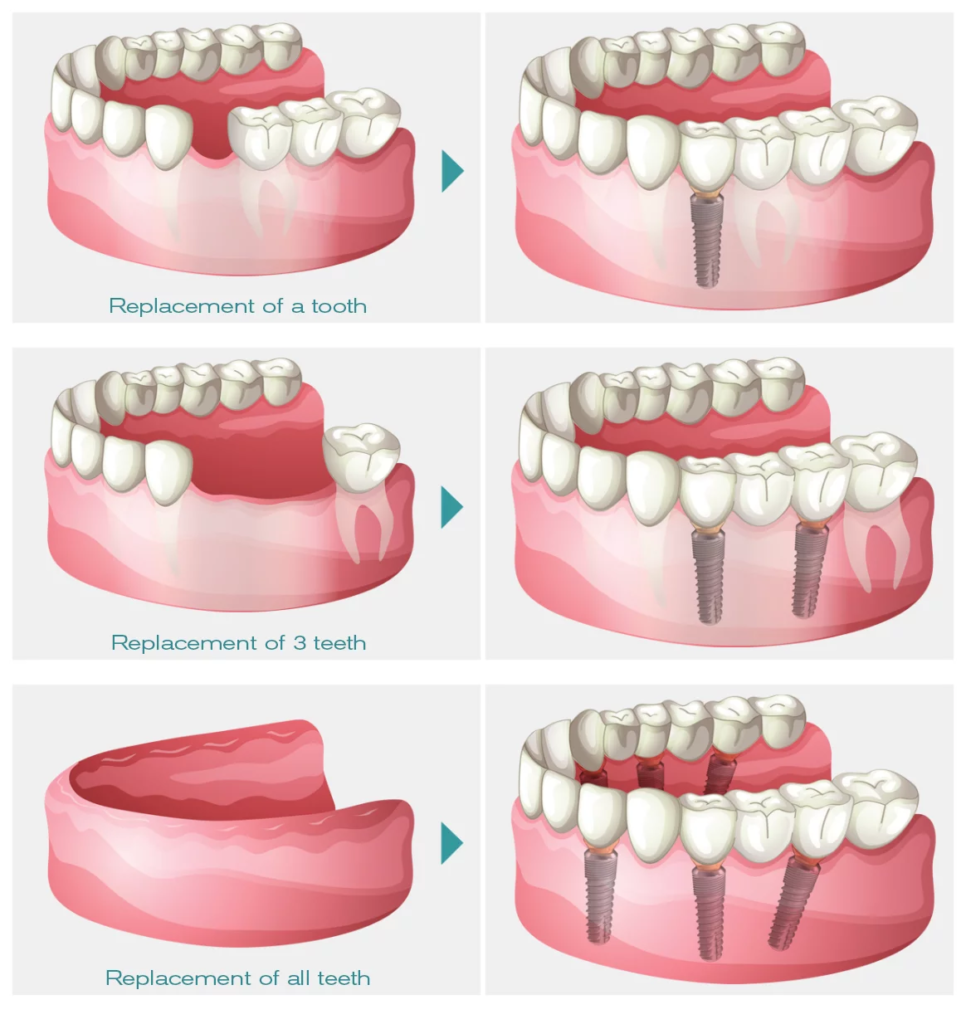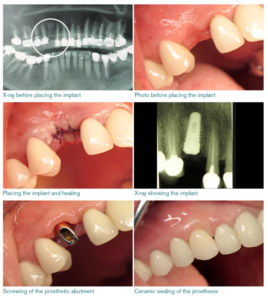
Dental Implants
- Preserving bone and gum volume
- Preventing the movement and possible loss of adjacent teeth
- Facilitating chewing, thus promoting optimal digestion
- Reducing risk of gum disease
- Harmonizing the smile
- Maintaining optimal speech
- Prevent temporo-mandibular articulation problems
What are Dental Implants?
Implantology is about replacing the missing root from a natural tooth with an artificial one. The artificial root fully supports the prothesis, without using adjacent teeth, which are then preserved and intact.
The dental implants can be placed in the lower or upper jaw to replace one or more missing teeth, but also to replace a removable (dental) prosthesis with a fixed prosthesis.

What are Dental Implants?

a complete fixed bridge can be carried out on several implants.
a complete removable prosthesis can be stabilized with several implants.
The number of implants placed based on our bone quality, the prosthesis type chosen and its placement (upper or lower jaw).
The Steps of Implant Treatment
- Diagnosis / Pre-implant consultation
- Implant Placement
- Gingival and bone healing
- Placement de la Prosthesis
- Follow-Up
- Steps Visual
Pre-implant questionnaire
Your clinician will take you through a questionnaire in order to:
Identify any contraindications for placing dental implants (serious cardiac pathologies, advanced osteoporosis, infectious diseases, etc.) assess beforehand any medical situations like local infection, type II diabetes, anticoagulant medications, etc. Pre-implant exam
Your clinician will perform an oral examination to assess the condition of the area to implant and to find any cavities or gingivitis.
Your clinician will be able to prescribe or perform a 3D exam (scan or cone beam) to guarantee maximum security. It also detects any important elements: nerves, sinus or anatomic variations in the area to implant.
These exams make it possible to create a specific treatment plan, adapted to your particular situation and will inform you on the different steps, the duration of the treatment, and all the associated treatment.
As a first step, the clinician will prepare the placement of your root-to-be. The clinician will then perform several new alveoli to be able to place the dental implant(s). The procedure is performed under local anesthesia and aseptic conditions.
Depending on the case, the clinician will go for a single procedure or two separate procedures, with a few weeks in between. In most cases, three to six months are enough before placing the crown, to let the implant integrate will in the bone (osteointegration).
The crowns and bridges are placed on the implant(s) placed in the mouth. After taking the impression, they are made by a dental technician and are set in the mouth at the dental practice by screwing or sealing.
Generally, the implant needs to be integrated to the bone in which it was placed before placing the prosthesis. Sometimes you can preview the placement with a temporary tooth on the same day as the implant placement. This chosen solution will be assessed case-by-case based on the clinical indications.
Once you’re back home, it’s important that you follow your clinician’s instructions and keep good dental hygiene. You must regularly see your dentist to prevent any complications. Your dentist will tell you how to clean and maintain hygiene for good post-surgicalfollow-up.

Frequently Asked Questions About Dental Implants
Preparation: extraction of non-preservable teeth, scaling and sanitization of the remaining teeth and gums.
Placing of the implants.
Gingival and bone healing for 3 to 6 months.
Placement of the permanent prosthesis
The number of teeth to replace.
The number of implants to place.
The complexity of cases to treat.
The type of prosthesis to place.
Your dental surgeon will give you a quote for the surgery (placing the implant) and one of the prosthesis (crown or apparatus) before starting the treatment to propose a solution suitable for your case and your budget.
Our Reliable And Proven Manufacturing Processes
Certified surface finish
30 years of clinical experience Microsandblasting with titanium oxide. Etched with nitric and hydrofluoric acids.
Precise, watertight, validated connection
15 years of clinical experience Internal hexagonal tapered connection. A single prosthetic connection common to all implant diameters.
Our quality guarantees
100% French implants Implants guaranteed for life Prosthetic part guaranteed for 10 years CE and ISO 12485 standard


